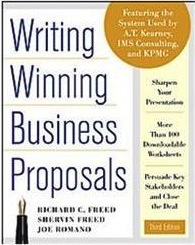A Taxonomy of Proposals
The purpose of all proposals is to propose a method for doing or providing something. That something defines more specific purposes:
-
•Doing a study to analyze a problem; or
-
•Providing a service or product to meet a need.
Accordingly, we can identify two major kinds of proposals: analytic and service/product.
Analytic Proposals
Analytic proposals propose a method for studying and/or solving a problem. The sub-genre can be roughly categorized by the intended ends of the proposed study:
-
•Research proposals propose a method to study a problem, sometimes to solve it but usually with the intent of discovering the nature, scope, or severity of that problem. An example would be a document written by a university professor to the National Science Foundation proposing a study of ozone depletion.
-
•R&D proposals propose a method to study and solve a problem, namely that of developing and testing a product according to defined requirements and/or specifications that are either supplied by the procurer or identified during the study. An example would be a document written by an aircraft manufacturer proposing to develop a fighter/bomber for the Navy.
-
•Consulting proposals propose a method to study a problem, usually with the intent of making recommendations for solving it. An example would be a document written to a business proposing a logistics-strategy study or a site-selection study, or a materials-management study.
Service/Product Proposals
Both service and product proposals propose a method for meeting a need, by performing a service or by delivering or installing a product:
-
•Service proposals propose arrangements for providing a service that will meet a need. Examples include proposals for auditing or tax services, for large-scale janitorial work, for landscaping, etc. A distinct category of service proposals includes program and project proposals, which propose an approach for offering a program (a course, a training session, workshop, conference, etc.) or managing a project (for example: soil, water, or energy conservation projects; or pest-control and fertilizer-management projects). Like some research proposals, some program and project proposals are often placed into the non-function-oriented category called “grant proposals.”
-
•Unlike R&D proposals, which detail a method for researching and developing a product, product proposals propose arrangements for delivering or installing an existing product that will meet a need. An example would be a proposal to install a computer system.
Sample Generic Structure Slots
The R&D proposal
-
•Situation: Without the XYZ missile, our country’s defenses are not adequate.
-
•Objectives: To develop the XYZ missile.
-
•Methods: We will use the Army’s specifications; we will design the missile this way; we will build it that way
-
•Quals: We have the facilities to build it, and our team has worked on similar projects before, producing results within budget.
-
•Costs: $$$
-
•Benefits: The Army will have the missile it needs, when it needs it, and for the money it plans on spending.
As accurately discussed in some textbooks, many proposals for large government contracts require bidders to submit three separate volumes (so that each can be independently evaluated by three different teams of evaluators): a technical proposal, a management proposal, and a cost proposal. Those familiar with such documents will readily see how the generic structure is in force, despite the overall three-part segmentation. The costs component, obviously, exists in the cost proposal. The quals component is the basis for the management proposal. The other components exist in the technical proposal.
The consulting proposal
-
•Situation: Given recent changes in your market and the aggressive actions taken by your competitors, your current strategic plan is inadequate.
-
•Objectives: To formulate a new plan.
-
•Methods: We will analyze your business, those of your competitors, and the market; define the niche best for you; and devise an appropriate plan.
-
•Quals: We know your market, and we have done similar studies for similar organizations.
-
•Costs: $$$
-
•Benefits: A new strategic plan will help you maintain and then increase your market share.
The university course proposal
-
•Situation: Nineteenth-century American women novelists played an important role in the culture, and our students need to understand their role and their contributions, but the current curriculum doesn’t offer them such opportunities.
-
•Objectives: (The course objectives.)
-
•Methods: These works will be covered, in this manner, with these tests and papers to ensure that the objectives are met.
-
•Quals: I wrote my dissertation on this subject and have continued to read widely and to teach successfully in the area.
-
•Costs: $$$
-
•Benefits: Students will have a better appreciation of the role of women writers in nineteenth-century America and a deeper understanding of the culture itself.
The objectives slot for proposals like that immediately above (and those for workshops, conferences, and training sessions in general) includes the course objectives themselves. The methods slot discusses the course procedures (or those of the workshop, conference, or training session).
In each of the examples above, the generic structure provides a powerful script for structuring the proposal’s argument. That argument (using the consulting proposal as an example) runs as follows:
-
•This is the situation (problem).
-
•Given that problem, these are our objectives for solving it.
-
•Given those objectives, these are our methods for achieving them.
-
•Given those methods, there are our qualifications to perform them.
-
•Given our methods and qualifications, this is how much it will cost.
-
•Given that cost, these are the benefits you will receive.
